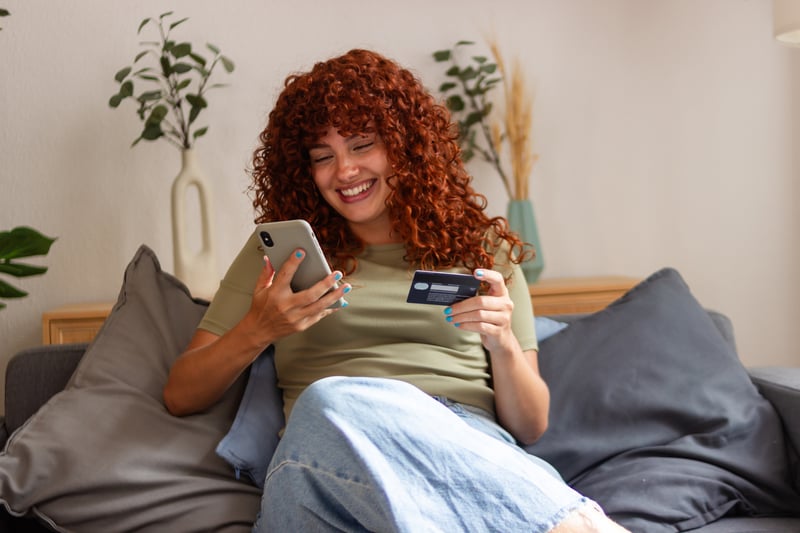Do you know what's driving me crazy about DTC marketing right now? Everyone's stuck in this endless discount spiral, slashing prices left and right like it's the only way to get customers through the door.
I've been working with DTC brands for the past few years, helping them optimize their conversion strategies, and I keep seeing the same pattern: brands addicted to discounts, wondering why their customers only buy during sales and their profit margins keep shrinking. Meanwhile, brands that shift to DTC free offers see higher margins and stickier customer behaviour
These brands are leveraging what behavioural economists call the "Zero Price Effect," and honestly? The results have been eye-opening.
When done strategically, "free" offers don't just outperform discounts – they actually build stronger customer relationships and protect brand value.
The Psychology Behind Why "Free" Beats "50% Off"

Let me share some fascinating research that completely changed how I think about promotions. Behavioural economist Dan Ariely discovered something wild: when people are offered something for free versus discounted, they don't just calculate the savings – their brains literally go haywire.
The Zero Price Effect shows that we irrationally overvalue free items. This is why DTC free offers consistently outperform generic markdowns. It's not just about the money; it's an "emotional hot button" that bypasses our normal decision-making process. In one study, 80% of participants chose a free product over an alternative that actually had higher objective value.
Think about it – when you see "Buy One Get One FREE," doesn't that feel better than "50% off two items," even though the math is identical?
Here's what's happening in your customer's brain when they encounter "free" offers:
- The word "free" eliminates perceived risk entirely
- No calculation needed, no buyer's remorse
- It triggers social norms instead of market norms
- Customers feel like the brand is being generous, not just transactional
- It preserves brand value because your core product stays full price
- The free item feels like a gift
This psychological response also activates what researchers call the "endowment effect." Once someone feels ownership of something free, taking it away feels like a loss rather than simply ending a promotion.
I learned this the hard way when I was helping a skincare client. We A/B tested "25% off your second product" against "Buy one moisturizer, get a free travel-size serum." Same dollar value, completely different results. The free offer converted 40% better and led to higher customer lifetime value because people actually used the free serum and came back for full-size versions.
The Hidden Costs of Discount Addiction

Before we dive into what to do instead, let's talk about why constant discounting is slowly killing your brand. Smarter DTC marketing strategies, on the other hand, avoid this trap by leaning into free value rather than price cuts. I see this pattern with almost every new client who comes to us.
Brand Devaluation Is Real
When customers consistently see your products marked down, they start associating your brand with "cheap" rather than quality. You've essentially trained them that your full price is inflated and they should wait for the next sale.
One of my e-commerce clients was running 30-40% off promotions every month. Their open rates were high, click rates looked good, but when we dug into the data, we discovered some troubling patterns:
- 78% of purchases happened during promotions
- Average order value was declining month over month
- Customer acquisition cost was rising because they needed deeper discounts to compete
- Profit margins had shrunk by 22% year-over-year
You're Attracting the Wrong Customers
Price-sensitive customers will jump ship the moment a competitor offers a better deal. They're not loyal to your brand – they're loyal to savings.
Here's a simple test: Look at your repeat purchase data. How many customers who first bought during a discount promotion went on to purchase at full price? If that number is low (under 30%), you've got a problem.
Discount Fatigue Is Setting In
Consumers are bombarded with promotional emails. Your "limited time 30% off" isn't special anymore – it's just noise. The result? You're stuck in what I call the "race to the bottom," constantly having to offer deeper discounts to move the needle.
5 "Free" Strategies That Actually Drive Profitable Growth

Based on working with dozens of DTC brands and analyzing their performance data, here are the five strategies that consistently outperform traditional discounting:
1. Free Trials That Convert Like Crazy
The data is stunning: 30-day free trials have a 56% conversion rate and are 28 times more effective than simply offering free products. But here's what most brands get wrong – they focus on the trial length instead of the trial experience.
Why 30 days specifically works: It's long enough for the "endowment effect" to kick in. Once customers start using your product regularly, they begin to feel like it's theirs. Taking it away feels like a loss, not just ending a trial.
|
Trial Length |
Sign-up Rate |
Conversion Rate |
Overall Effectiveness |
|
3-day |
High (35%) |
Low (15%) |
Limited impact |
|
14-day |
Medium (25%) |
Medium (32%) |
Moderate |
|
30-day |
Lower (15%) |
High (56%) |
Highest ROI |
Implementation strategy that actually works:
- Focus on getting users to their "aha moment" as quickly as possible
- Use email automation to guide them through key features
- Track engagement metrics, not just conversion rates
- Offer white-glove onboarding for high-value prospects
Real example: One of our SaaS clients implemented a 30-day free trial with guided onboarding. Their conversion rate jumped from 18% (with their previous 7-day trial) to 52%, and customer lifetime value increased by 34% because trial users understood the product better before converting. This is a textbook case of e-commerce conversion optimization through free value rather than discounts. For more on this, have a look at our ultimate guide to e-commerce conversion optimization.
2. Strategic Free Shipping (Not Just "Free Shipping")
Here's what most brands get wrong – they either eat the shipping costs completely or set the threshold too low. Free shipping influences 52.6% of purchase decisions, but only when done strategically. The free shipping vs discounts debate isn’t even close; shipping incentives almost always win.
The psychology behind thresholds: When you set a free shipping minimum, you're not just covering costs – you're creating a compelling reason for customers to add items to their cart.
Finding your sweet spot requires some math. Calculate your current average order value (AOV), then set your threshold 15-25% above that number. Test different amounts to find the optimal balance between encouraging larger orders and maintaining profitability.
Make progress visible throughout the experience:
- Show messages like "Add $15 more for free shipping" in cart
- Use progress bars showing how close they are to the threshold
- Suggest specific products to reach the minimum
Advanced tactics that work:
- Tiered shipping structures ($0-$49: $5.99, $50-$99: $3.99, $100+: Free)
- Product-specific free shipping on bestsellers
- Free shipping exclusively for loyalty members
- Geographic targeting for specific regions
One furniture retailer we worked with saw their AOV increase by 31% just by moving their free shipping threshold from $75 to $95 and adding suggested products at checkout.
3. Gift with Purchase Strategies That Actually Add Value
Generic branded tote bags aren't cutting it anymore. Your free gift needs to genuinely enhance the customer experience or introduce them to other products.
Gifts that actually work:
- Sample-sized products that let customers try something new with zero risk
- Complementary accessories that enhance the main purchase
- Seasonal or limited-edition items that create urgency and exclusivity
- Digital bonuses like e-books, courses, or exclusive content
Strategic implementation requires setting minimum purchase thresholds slightly above your AOV, using GWP to move slow inventory or introduce new products, making the gift feel substantial and valuable, and clearly communicating the offer throughout the shopping experience.
|
Gift Type |
Customer Perception |
Repeat Purchase Rate |
Inventory Impact |
|
Branded merchandise |
Low value |
15% |
Increases costs |
|
Product samples |
High value |
45% |
Drives future sales |
|
Complementary items |
Medium-high value |
38% |
Clears inventory |
|
Digital content |
Medium value |
28% |
No inventory cost |
Case study: A beauty brand switched from giving away branded makeup bags to offering a 7-day skincare sample kit with purchases over $50. Not only did their conversion rate increase by 23%, but 41% of customers who received the sample kit purchased full-size versions of the sampled products within 60 days. This lowered their CAC and proved how free gifts can be a powerful lever for DTC customer acquisition.
4. Buy One, Get One (BOGO) Done Right
BOGO deals can increase sales by up to 90% when executed properly. The key is making sure your margins can handle it and that the offer makes logical sense for your product category.
BOGO variations that work:
- Classic BOGO (great for consumables or products with high repeat rates)
- Buy X Get Y (perfect for pairing complementary products)
- Buy One Get Free Samples (introduces customers to your product line without full-size costs)
- Buy One Get One 50% Off (for higher-margin products where full BOGO isn't sustainable)
Profitability considerations:
- Calculate your true cost of goods (not just wholesale price)
- Factor in shipping and handling costs
- Consider lifetime value rather than just immediate transaction profit
- Test different variations to find your optimal offer
The psychology advantage: BOGO leverages both the zero price effect and the feeling of getting a "deal" without devaluing your primary product.
5. DTC Loyalty Programs with Strategic "Free" Perks
This is where "free" really shines for long-term growth. Instead of just offering points toward future discounts, give unexpected free gifts at meaningful milestones.
Effective loyalty "free" strategies include surprise anniversary gifts (free product on their 6-month or 1-year anniversary), exclusive early access (free shipping or first access to new products), milestone rewards (free gift after 5th purchase, 10th purchase, etc.), and member-only content (free guides, styling tips, or educational resources).
Implementation framework:
- Map customer journey milestones to identify meaningful moments for surprises
- Tier your rewards with different levels of "free" perks based on customer value
- Make it feel personal by using data to customize free gifts to customer preferences
- Communicate value clearly to help customers understand the exclusive nature of their perks
A coffee subscription service I worked with implemented surprise "free bag" rewards at unexpected intervals (not just monthly anniversaries). Customers who received these surprise gifts had 67% higher retention rates and generated 2.1x more lifetime value.
For more on how the top agencies utilize these DTC marketing strategies, have a look at this guide to some of the top DTC marketing agencies around today.
Using AI to Optimize Your "Free" Strategy

This is where things get really interesting, and honestly, where I've seen the biggest breakthroughs with clients lately. AI can help you personalize and optimize these strategies in ways that weren't possible even two years ago.
Predictive Personalization
AI lets you offer the right "free" incentive to the right customer at the right time. Instead of showing everyone the same offer, you can:
- Segment by purchase intent (price-sensitive customers see free shipping, quality-focused customers see gift-with-purchase)
- Predict cart abandonment and trigger specific free offers when someone's likely to leave
- Customize trial lengths by offering different trial periods based on customer sophistication
- Time surprise gifts using behaviour data to determine optimal moments for loyalty rewards
Dynamic Testing at Scale
Rather than running one A/B test at a time, AI allows you to continuously optimize multiple variables. This includes offer type optimization (constantly testing free shipping vs. GWP vs. BOGO), threshold testing (dynamically adjusting free shipping minimums based on customer segments), messaging variations (testing different ways to communicate the same offer), and creative elements (optimizing images, colours, and placement of free offers). This essentially allows you to test e-commerce promotional strategies at scale.
Journey Optimization
AI helps you place "free" offers at the optimal points in the customer journey. This means offering free trials or samples to first-time visitors to reduce risk, providing strategic free shipping or surprise gifts to cart abandoners, giving exclusive free perks to loyal customers that make them feel valued, and creating free offers for win-back campaigns to re-engage dormant customers.
Real implementation example: One of our clients uses AI to analyze customer behavior and automatically adjust their free shipping threshold. High-value customers see lower thresholds (encouraging more frequent purchases), while price-sensitive segments see higher thresholds (encouraging larger basket sizes). The result? 28% increase in overall profitability while maintaining customer satisfaction.
Measuring Success: Key Metrics That Actually Matter
Here's what I've learned about tracking the success of "free" strategies – you can't just look at immediate conversion rates. You need to think bigger.
Primary metrics to track:
- Customer Lifetime Value (CLV) to see if customers acquired through "free" offers are more valuable long-term
- Repeat purchase rate to check if "free" customers come back at full price
- Average order value to verify if free shipping thresholds are actually increasing basket sizes
- Profit per customer by factoring in the cost of free items against total customer value
Advanced analytics should include:
- Cohort analysis (comparing long-term behaviour of discount vs. "free" acquired customers)
- Attribution modelling (understanding which "free" touchpoints drive conversions)
- Incremental revenue (calculating additional revenue generated by each "free" strategy)
- Customer satisfaction scores (tracking how "free" offers impact brand perception)
Implementation Roadmap: Start Small, Scale Smart
Don't try to overhaul everything at once. Here's the systematic approach I use with clients to ensure success without disrupting existing operations.
Week 1-2: Foundation Assessment Start by auditing your current discount strategy and customer data. Look at your customer lifetime value by acquisition channel, analyze repeat purchase patterns, and identify your most profitable customer segments. This baseline data will be crucial for measuring improvement.
Week 3-4: First Test Setup Pick ONE "free" strategy to test against your best-performing discount. I usually recommend starting with strategic free shipping since it's easiest to implement and measure. Set up proper tracking and analytics to capture both immediate and long-term impact.
Month 2: Optimization and Learning Analyze results from your first test, focusing on both conversion rates and customer quality metrics. Optimize the winning strategy based on data, then begin planning your second "free" strategy. This is also when you should start thinking about loyalty program integration.
Month 3: Integration and Scaling Integrate successful strategies across all marketing channels, implement basic AI personalization if possible, and launch your revamped loyalty program. By this point, you should have clear data on which approaches work best for your audience.
The key to success with this timeline is patience and discipline. Don't jump to conclusions after just a few days of data, and resist the urge to test everything at once. Each strategy needs time to show its true impact on customer behaviour.
The Bottom Line: Why This Actually Works
Look, I'm not saying discounts don't have their place. They're still useful for inventory clearance, seasonal promotions, or competitive responses. But if you want to build a sustainable, profitable DTC brand that customers actually love (not just tolerate until a better deal comes along), you need to embrace the psychological power of "free." In particular, DTC free offers can drive loyalty and long-term profitability.
The math might look scary at first – giving away products or absorbing shipping costs feels expensive. But when you factor in increased conversion rates, higher average order values, stronger customer lifetime value, and improved brand perception, "free" often outperforms discounts significantly.
Here's what I've seen across dozens of clients who made this transition: average 35% increase in customer lifetime value, 40-60% improvement in repeat purchase rates, 25% reduction in customer acquisition cost (due to higher conversion rates), and improved brand perception and pricing power.
Start small, test everything, and be patient. Pick one "free" strategy and test it against your current discount approach. Track not just immediate conversion rates, but customer behaviour over 6-12 months. I think you'll be surprised at how much more valuable a customer acquired through a "free" offer can be compared to one who just wanted a deal.
The brands that figure this out first will have a massive competitive advantage. The question is: will that be you?
Want to see how strategic "free" offers could transform your DTC growth? I've helped brands increase conversion rates by up to 40% by moving away from discount-heavy strategies. Every brand is different, and what works for a skincare company might not work for a tech accessory brand. That's where having a strategic partner who understands DTC psychology becomes invaluable.
At Roketto, we've spent years helping DTC brands optimize their conversion strategies and build sustainable growth engines. If you're ready to move beyond the discount trap, let's talk about your specific challenges.

Ulf Lonegren
Ulf Lonegren is CEO and Co-Founder of Roketto, where he has led digital marketing strategy for over 15 years. With extensive experience in both traditional SEO and emerging AI search optimization, Ulf has guided hundreds of SaaS and ecommerce companies through major search algorithm updates and platform shifts. His expertise spans from the early days of Google's algorithm changes through the current AI revolution, giving him unique insight into what actually drives sustainable search visibility. Ulf's approach focuses on fundamental optimization principles that adapt to new technologies rather than chasing trending acronyms, a philosophy that has helped Roketto's clients achieve measurable growth across multiple search paradigm shifts.











2.png)
2.png)









